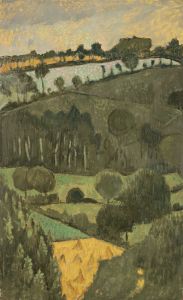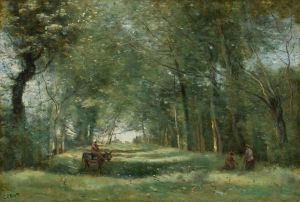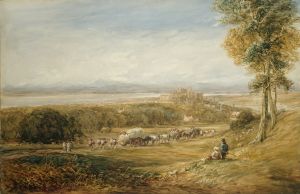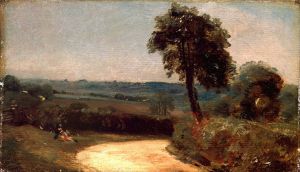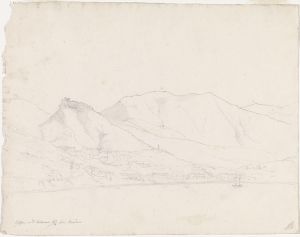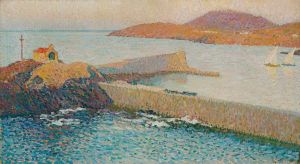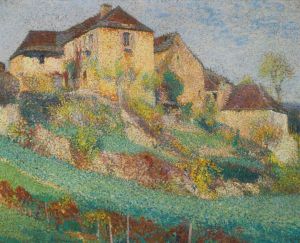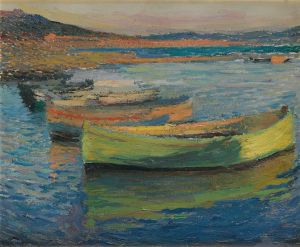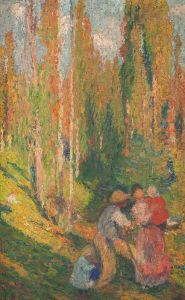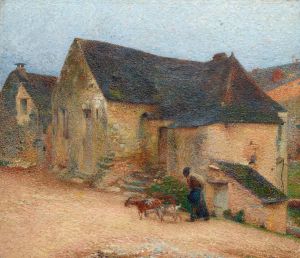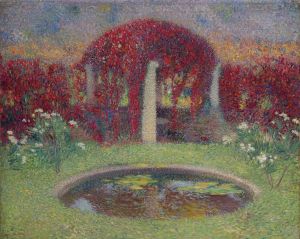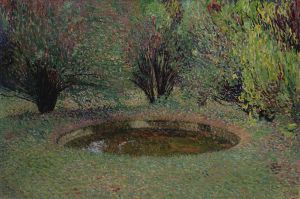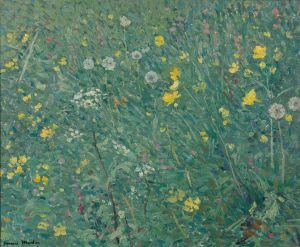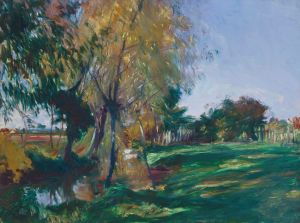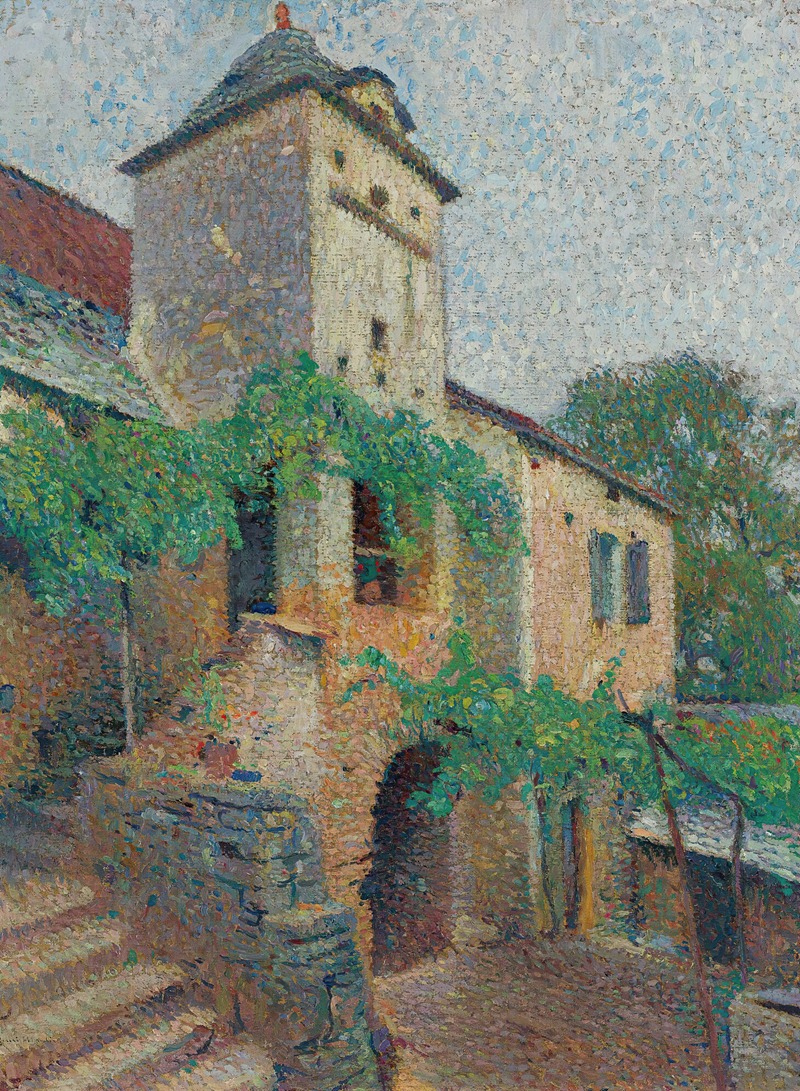
Vue D’une Ferme Avec Un Pigeonnier
A hand-painted replica of Henri Martin’s masterpiece Vue D’une Ferme Avec Un Pigeonnier, meticulously crafted by professional artists to capture the true essence of the original. Each piece is created with museum-quality canvas and rare mineral pigments, carefully painted by experienced artists with delicate brushstrokes and rich, layered colors to perfectly recreate the texture of the original artwork. Unlike machine-printed reproductions, this hand-painted version brings the painting to life, infused with the artist’s emotions and skill in every stroke. Whether for personal collection or home decoration, it instantly elevates the artistic atmosphere of any space.
Henri Martin was a notable French post-impressionist painter, recognized for his distinctive style that often incorporated elements of pointillism and symbolism. Born in 1860 in Toulouse, France, Martin developed a passion for art at a young age and pursued formal training at the École des Beaux-Arts in Paris. His work is characterized by a vibrant use of color and a keen interest in capturing the essence of the French countryside.
"Vue D’une Ferme Avec Un Pigeonnier" is one of Martin's works that exemplifies his fascination with rural landscapes and the serene beauty of nature. The title, which translates to "View of a Farm with a Dovecote," suggests a pastoral scene, likely depicting a typical French farmstead with a dovecote, a structure intended to house pigeons or doves. This subject matter aligns with Martin's frequent exploration of rural themes and his desire to portray the tranquility and charm of the French countryside.
Martin's technique often involved the use of small, distinct brushstrokes, a method influenced by the pointillist movement, which he adapted to suit his own artistic vision. This approach allowed him to create a sense of luminosity and depth in his paintings, capturing the play of light and shadow across the landscape. In "Vue D’une Ferme Avec Un Pigeonnier," one can expect to see this technique employed to convey the textures of the natural environment and the architectural details of the farm and dovecote.
Throughout his career, Martin was deeply influenced by the Symbolist movement, which sought to express the emotional and spiritual aspects of the world through art. This influence is often reflected in his choice of subject matter and his use of color, which imbues his landscapes with a sense of mood and atmosphere. His works are not merely representations of physical spaces but are imbued with a sense of place and emotion, inviting viewers to experience the serenity and beauty of the scenes he depicted.
Henri Martin's contributions to art were recognized during his lifetime, and he received numerous accolades, including the prestigious Grand Prix at the Exposition Universelle in 1900. His works are held in high regard and can be found in various museums and private collections around the world. Martin spent much of his later life in the village of Labastide-du-Vert in the Lot region of France, where he continued to draw inspiration from the surrounding landscape until his death in 1943.
"Vue D’une Ferme Avec Un Pigeonnier" is a testament to Martin's skill as a painter and his ability to capture the essence of rural France. While specific details about the painting's creation and provenance may not be widely documented, it remains an important part of Martin's oeuvre, reflecting his enduring fascination with the natural world and his mastery of color and form.





